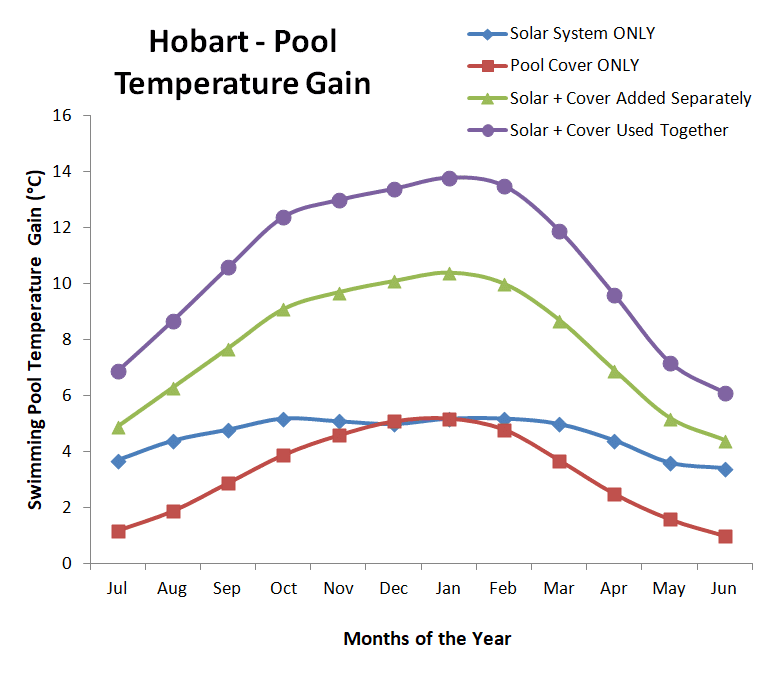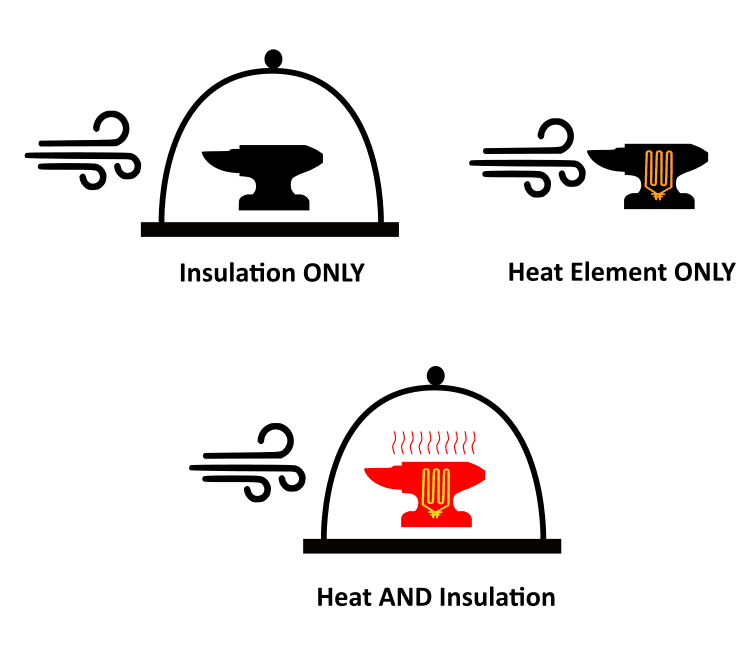Why Use a Pool Cover With a Solar Pool Heater
Article posted by Gregory Grochola (physicist) on 13th May 2019
Previously, we've looked at how much a solar pool heater can increase the temperature of a swimming pool, and separately how much a pool cover can boost the temperature, and we've hinted at a synergistic effect between the two, but lets specifically examine this synergistic effect.
In this article we performed calculations using our new heat loading calculator (validated against the heat loading standards AS 3634-1989 and ISO TR 12596 1995 here).

We take Hobart as an example but really the concepts are applicable to all areas.
In the following chart we show the calculated temperature gain (in oC) for a swimming pool (with no shade, average wind sheltering and light color walls) under various heating conditions.
Firstly, the blue (diamond) lines show the temperature gain for a 67% coverage OKU solar panel pool heating system. Next the red (square) line shows the temperature when using a solar pool cover 100% of the time.
The green (triangular) line is just the mathematical addition of both of these temperature boost components.
While the purple (circle) line shows the temperature boost you get from using both solar heating and the pool cover TOGETHER.
Notice the purple line is much higher than the green line - the physics clearly shows there is a synergistic effect over and above just a simple addition of solar + pool cover.
But why, why is it not just a linear addition?
From a physical prospective the "extra" bit you get - the synergistic effect from using both at the same time, stem from the cover insulating and locking in the solar gains from the solar pool heating system.
Heat AND Insulation Works Best to Increase Temperatures

To understand this concept we can think of it this way, in the anvil picture shown, lets say we insulate a large cast iron anvil in a vacuum glass case, the temperature increase as a result will be minor, as there is no real heat source.
Next, lets put a 1000W heat element on an uninsulated anvil exposed to the wind (no vacuum glass case), the temperature increase will also be minor as it loses heat quickly.
But look what would happen if we put the same 1000W heating element on the anvil AND vacuum insulate.
The temperature increase would be very high, as the system can't easily lose heat, we'd get an anvil temperature well above what we would get if we just added the minor temperature increases from the two previous situations.
The end temperature of an object is always the balance point between heat in and heat out.
So if you want a warm pool the smart thing to do is to work on both sides of the heat loadings equation:
Increase insulation (via a pool cover and a wind break) AND increase heat input (via solar heating system and the removal of shading on the pool).

